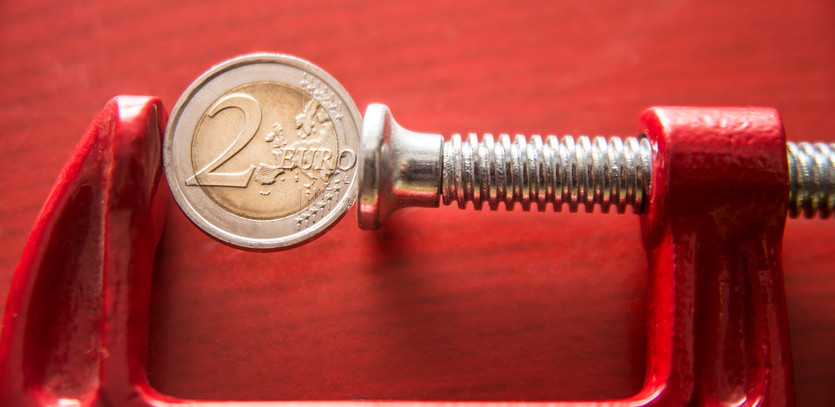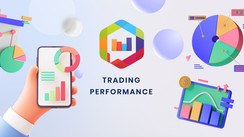An Overview of Fixed Exchange Rates
In a fixed exchange rate setup, a country aligns its currency's value with a specific widely recognized commodity or currency. It's commonplace to peg currencies to the US dollar due to its extensive use in international trade. Presently, many fixed exchange rates are tied to the US dollar or to the currencies of countries that serve as key trading partners.
Historic Background and Explanation of Fixed Exchange Rates
Traditionally, currencies were valued according to the gold equivalent. During the Bretton Woods Agreement of 1944, there was a mutual understanding to peg all currencies to the US dollar, with the US pledging to exchange all dollars for gold. However, this collapsed when President Nixon took the dollar off the gold standard in an attempt to halt a recession in 1971. This marked the end of the gold standard's century-long history. Yet, many countries continued to peg their currency to the dollar since it serves as the global reserve currency.
A fixed exchange rate guarantees a constant exchange rate for a specific currency, allowing traders to ascertain the exact exchange rate for another currency. If you visited Saudi Arabia, for example, you'd know that you could always exchange one dollar for 3.75 Saudi riyals, because the dollar-riyal exchange rate is fixed. Saudi Arabia pegs its currency to the dollar because of its primary export, oil, is traded in dollars. This standard is also extended to other global commodities contracts.
The Benefits of Fixed Exchange Rates
Embarking on a fixed exchange rate pathway can have pronounced benefits for a country, fundamentally imparting a sense of economic equilibrium. Below, we delve into the advantages that come with this approach:
Predictability and Stability
- Consistent Exchange Rates: People and businesses can engage in cross-border trade with the assurance of a stable currency value.
- Safety against Fluctuations: The stability spares businesses from the predicaments often occasioned by sudden swings in currency value, engendering a conducive environment for foreign investments.
Economic Growth Facilitation
- Inflation Control: By hitching its currency to a stable and strong foreign currency, a country can steer clear of inflationary pressures.
- Robust Economic Ties: Leveraging the economic might of powerhouse economies like the U.S. or the European Union can ensure a ripple effect of growth and stability.
Beneficial for Trade
- Competitive Advantage: Stable currency fosters competitiveness on the global stage, particularly for countries with a significant export portfolio.
- Consumer Benefits: Consumers stand to benefit from moderated prices as the fixed rate system staves off inflation, enhancing the purchasing power of the local currency.
A Notable Case: China
China is illustrative of a country transitioning from a fixed exchange rate. They link the value of their currency, the yuan, to a basket of currencies including the dollar. Since August 2015, the exchange rate has been allowed to fluctuate according to the previous day's closing rate, within a strict margin of 2%.
However, China's constant recalibration of the yuan-to-dollar exchange rate has drawn pushback from the U.S. government, which has urged China to let the yuan appreciate. This would effectively reduce the cost of U.S. exports in China and make Chinese exports more expensive in the U.S., potentially reducing the U.S. trade deficit with China.
The Downside of Fixed Exchange Rates
Despite the boon of stability, a fixed exchange rate regimen comes with its set of challenges. Below we analyze the potential pitfalls and complexities that nations have to navigate:
Economic Strains
- High Maintenance Costs: Maintaining a fixed exchange rate demands hefty financial reserves, a facet that can strain a country's economic resources.
- Inflexibility: The system offers little room to maneuver in response to economic vicissitudes, potentially leading to exacerbated economic downturns.
Vulnerability to Speculative Attacks
- Target for Speculators: A fixed currency can become a veritable magnet for speculators, posing severe threats to economic stability.
- Recession Trigger: The central bank's effort to sustain the currency value can force it into a corner, where elevating interest rates becomes inevitable, ushering in a recession phase.
Historical Case Studies
- The British Pound in 1992: A stark testament to the perils of fixed exchange rate came to the fore in 1992 when the British pound faced relentless speculative attacks, ultimately relinquishing its peg to the German mark.
- Swiss Franc in 2015: Switzerland found itself compelled to unshackle the Swiss franc from its fixed position to the plummeting euro, illustrating the vulnerabilities inherent in this system.
Policy Constraints
- Limited Policy Autonomy: Adhering to a fixed exchange rate system can considerably restrict a government's policy space, compelling it to often prioritize exchange rate stability over other economic objectives.
- Trade Balance Dilemmas: The system can engender trade balance issues, necessitating intricate and often challenging policy measures to maintain economic harmony.
By examining the pros and cons in detail, one gains a nuanced understanding of the careful consideration and strategic foresight required in adopting a fixed exchange rate system, highlighting its role as a double-edged sword in economic policy.
Examples of Fixed Exchange Rates
Different countries use different forms of fixed exchange rates. Some peg their currency to a fixed value against a single currency, while others peg it to a set value to a basket of currencies. Still, others fix it to a single currency or a basket of currencies but allow it to fluctuate within a range. For instance, there are countries like Aruba, Bahamas, Bahrain that promise a fixed exchange rate against the U.S. dollar while countries like Bosnia and Herzegovina, Bulgaria, and Denmark base their currency value on the euro. On top of these, 14 countries use common fixed currencies like the Central African CFA franc or the West African CFA franc, which are tied to the euro at a particular ratio.
Then there are the countries that maintain a fixed exchange rate for a basket of currencies rather than a single currency such as Fiji, Kuwait, Morocco, and Libya. Lastly, some countries have a trading range tied to either a single or a basket of currencies like China.
The following outlines some examples based on an IMF report from April 2019:
- Aruba: 1 Florin equals 1.79 U.S. dollars
- Saudi Arabia: 1 Riyal equals 3.75 U.S. dollars
- Denmark: 1 Krone equals 7.47 Euros
- Hong Kong: 1 Dollar equals 7.83 U.S. dollars
In addition, several African nations share common fixed currencies tied to the Euro, demonstrating regional economic collaboration.
Frequently Asked Questions
How does Increasing Money Supply Impact the Fixed Exchange System?
A surge in the money supply can destabilize the fixed exchange rate, necessitating rate adjustments to fend off potential speculation attacks in foreign exchange markets.
What Exactly is a Floating Exchange Rate?
A floating exchange rate refers to a system where the currency value fluctuates based on market dynamics, offering a contrast to the fixed rate system.





